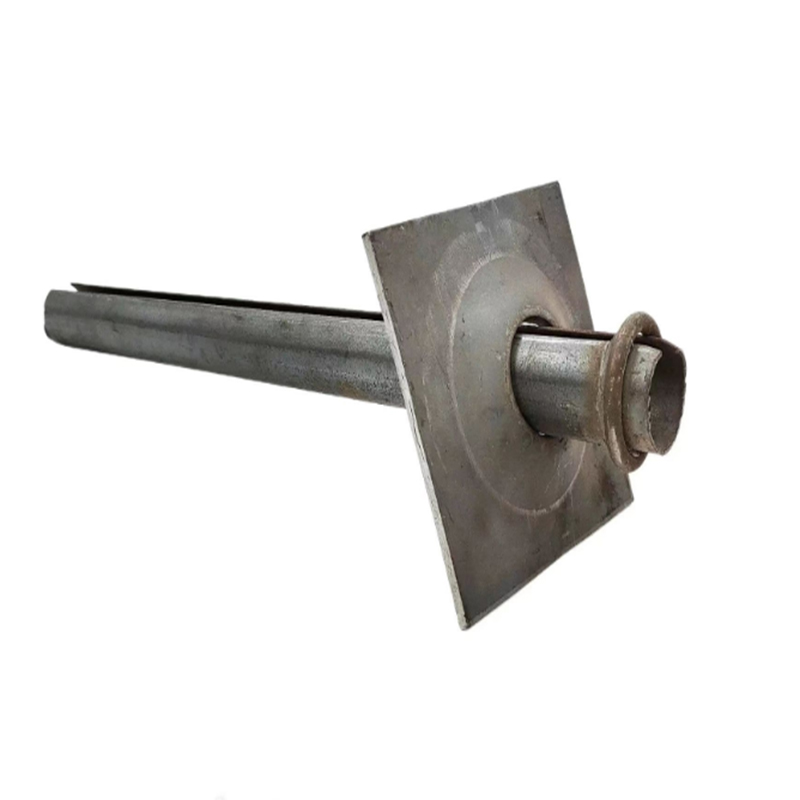Split Metal Pipe For Mining MF43
Advantages:
1.support effect is better.
2. Low labor intensity and high efficiency.
3. Economic benefits are more obvious.
4.Simple and convenient installation .
5. Large anchoring force.
6. Anchor force is distributed along the whole length of the rod.
Product Details:
Slit Tube Metal Anchor is an anchor product manufactured through the use of sheet metal rolled and pressed into a tubular rod with longitudinal slits. This type of anchor prevents the surrounding rock from sliding by drilling holes into the rock that are slightly smaller than the diameter of the anchor, realizing that radial pressure is exerted around the holes and generating friction. In addition, the supporting force of the anchor pallet pallets acts as a support.
Slit pipe metal anchors make the surrounding rock in a three-way force state, using the elastic tension of the pipe wall to squeeze the hole wall and generate friction to realize its own anchoring effect. This type of anchor is equivalent to fixing a stratified rock formation in a stable surrounding rock formation, similar to expansion bolt anchoring.
The indentation force into the borehole is approximately 25kN per meter of anchor, producing an anchoring force that is roughly equal to the indentation force, providing effective support and reinforcement. This type of anchor is suitable for use in engineering situations where reinforcement of bedded perimeter rock is required.
Specification
Diameter(±0.5) | 33mm | 39mm | 40mm | 42mm | 46mm | 47mm |
Length(±0.5) | 1.2m | 1.5m | 1.9m | 2.0m | 2.5m | 3m |
Mining Plate(±0.5) | 140*140*6mm,150*150*5mm,200*200*10mm | |||||
Material | Q235,16Mn,20 Mnsi | |||||
Technical Features:
1. The raw material is made of high-strength alloy strip steel, which has excellent strength and durability.
2.Simple and convenient installation, easy to implement.
3. No additional anchoring agent is required, reducing the complexity and time cost during installation.
4. Higher friction between the anchor and the rock body, which is favorable for solid fixing.
5. With high shear and tensile strength, it can effectively withstand external forces.
6. Equipped with high-strength pallet, the pallet is subjected to uniform force and can effectively support the anchor system.
7. Applicable to the situation where the height of the roadway is greater than the length of the anchor rods, which can provide stable support.
Technical requirements:
Surface requirements: the surface of the sewed pipe anchor should be flat and free from serious strains, rust and corrosion and other defects. The welds should be free of cracks, porosity or slag entrapment, and there should be no burning through the pipe wall. The pallet should be able to move freely on the rod. The mutual misalignment between the interface of the retaining ring and the opening of the pipe seam is between 1700-1900 as the best.
Strength requirements: the pull-off force of the retaining ring weld should be not less than 80kN, and the ultimate tensile force of the rod body should be above 110kN. The initial anchor force should be not less than 25kN per meter, and the bearing capacity of the pallet should be not less than 65kN.
Basic operation steps of sewing pipe anchor:
1. Determine the hole position of the anchor, and use the drilling rig to carry out the drilling operation according to the design requirements.
2. Use pressurized air equipment to blow out the rock dust in the hole to ensure that the hole is clean.
The recommended calculations for drilling hole diameter and depth for pipe slit anchors are as follows:
In rock strata: the recommended drill hole diameter is (0.9-0.95) times the diameter of the anchor, the depth of the anchor hole is the length of the anchor plus 100mm, and the deflection rate of the drill hole is less than 1%.
In coal seams: The recommended drill hole diameter is (0.9-1.00) times the diameter of the anchor rods, the depth of the anchor rods is the length of the anchor rods plus 200 mm, and the deflection of the drill hole is less than 1.5%.
3. Install the anchor disk in the prepared hole and use the impact drill to drive the anchor into the hole. This process needs to be carried out according to the specific hole diameter and depth to ensure that the anchor rods are safely fixed.
natural endowments
















